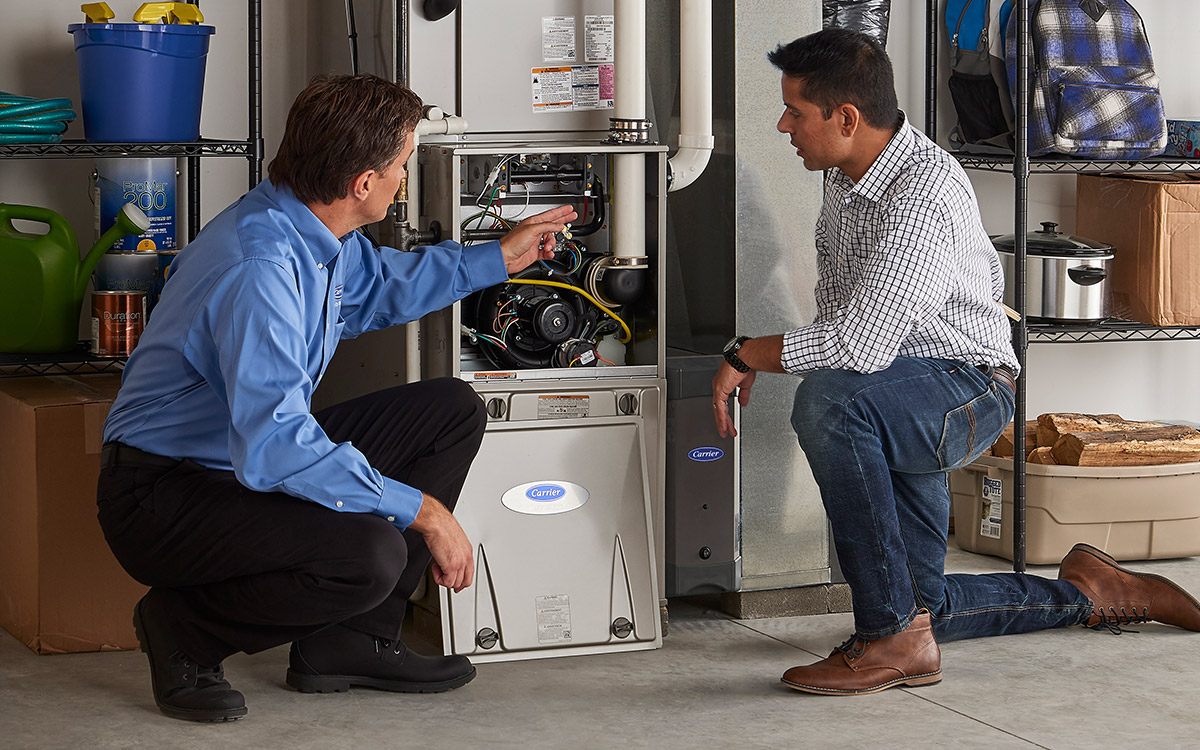
DIY jobs seem like a lot of fun, especially when you’re someone who loves to tinker around at home.
Doing a major project for your home by yourself can be a great confidence booster, and you can save a lot of money too. But some things are better left to the pros—this includes HVAC ductwork installation.
When your home HVAC ductwork is getting old or you want to install an HVAC for the first time, you might consider trying to get the job done yourself. It’s just a matter of connecting a few metal tubes, right? Not exactly.
Installing a new HVAC system involves a lot more than just the ductwork, it’s a far more complex process than you think. So let’s take a deep dive into why you should call a professional to handle HVAC ductwork installation for you.
Design and Sizing Challenges
Ductwork is not just about randomly running metal tubes through your attic. HVAC ductwork is an intricately designed web of channels that make sure the cold or hot air is distributed evenly across your home. If the ductwork isn’t designed and sized appropriately, you could find yourself facing problems like spaces being excessively cold or hot or your HVAC system using more power than it should, leading to higher electricity bills.
A professional HVAC technician has the expertise to design a ductwork system that factors in several crucial aspects:
1. Heat Load Calculations
Different rooms in your home will have different heating and cooling requirements. A professional will do a complete heat load calculation to determine how many ducts of what size and layout are required for each area. This maintains a balanced airflow and prevents any rooms from being deprived of the conditioned air.
2. System Compatibility
If you’re replacing your ductwork, the new ductwork has to be compatible with the HVAC system you already own, which includes the furnace or air handler and the air conditioner. The wrong size or airflow rate can cause reduced efficiency and even equipment damage.
3. Code Compliance
Local building codes usually determine the minimum duct size and installation practices. The professional makes sure that your ductwork complies with all the codes so that your HVAC ductwork is perfectly safe and you won’t need to worry about any legal penalties.
Fabrication and Material Selection
Different kinds of materials can be used in ductwork. Some of the most common ones are;
1. Sheet Metal
The boards are long-lasting but the fabrication requires special tools and skills.
2. Flexible Duct
Less efficient, prone to kinks and leaks, but easy to maneuver in tight spaces.
A trained professional will not only help you choose the most appropriate material for your home’s ductwork but also possess the skills required to make and fit the ductwork properly. Sheet metal necessitates specialized tools such as sheet metal brakes and seamers to generate the necessary precise bends and connections.
If the bends are not put right or the seams are leaky, the system will have a reduced airflow which defeats the purpose of the system having a proper design.
Airflow Optimization and Sealing
Ductwork can be perfectly manufactured and designed, but the real task is to achieve the ideal balance. This includes making sure that the necessary amount of conditioned air is supplied to each room in your house. A professional will use sophisticated equipment such as a manometer for measuring airflow from different parts of the system and setting the dampers for uniform distribution.
Uneven airflow balance can cause the rooms to be too hot or cold as well as waste energy and result in higher energy bills. Moreover, the ducts in your HVAC system may develop leaks which worsen the airflow and lead to poor indoor air quality by letting dust and pollutants spread throughout your home.
Also, sealing leaks needs to be done with precision and the help of specially made materials like mastic or metal tape. An expert will see to it that your duct system is well-sealed to avoid these problems.
The Time Factor and Safety Concerns
Installing HVAC ductwork can be very time-consuming and there’s a pretty steep learning curve you’ll need to face if you want to do it the right way. If you have a busy schedule, it may be very hard for you to install ductwork on your own.
Professionals, however, have the skills and experience to get the job done quickly and efficiently while you focus on your daily schedule.
Also, lots of safety precautions need to be taken when installing ductwork. Professionals are equipped with the appropriate safety equipment such as gloves, eye protection, and respirators which prevent them from being harmed by cuts, dust inhalation, and other hazardous dangers.
Further Benefits of Calling a Professional
Now we have an idea of why calling a professional to install ductwork for your HVAC is a better idea than doing the job yourself. So let’s check out some other nice benefits of working with the pros;
1. Warranty and Support
Almost all professional HVAC installations are done with warranties included that ensure they will provide coverage for any defects in materials or workmanship. Also, you get ongoing support and maintenance services to guarantee your ductwork system runs effectively for a long time.
2. Preventative Maintenance
Experts can detect issues with your ductwork system design during installation and provide you with preventive maintenance advice to avoid future catastrophic repairs.
3. System Optimization
When your heating and cooling needs change, a professional can evaluate your existing ductwork and suggest updates for better efficiency or to accommodate any changes you might make to your home.
Frequently Asked Questions
Below are some commonly asked questions we receive from our customers about HVAC ductwork installation:
1. Can I clean my home’s HVAC ductwork by myself?
Yes, you should be able to clean the accessible parts of the ductwork using a vacuum cleaner and brush attachment. For the harder-to-reach places, you should always call a professional.
2. How often should I check my ductwork?
It’s recommended to check your ductwork at least once every 2-3 years, depending on how much you use your HVAC system.
3. Will I need to replace my ductwork if I’m getting a new HVAC system?
Not always. If your existing ductwork is compatible with your new system, no replacement will be needed. But you will need to have a professional take a look and let you know if your current ductwork will need to be replaced or not.
Call an HVAC ductwork installation service today
If you want the perfect HVAC installation for your home, calling a professional is always the way to go. They have the skills, experience, and knowledge to ensure that your HVAC ductwork is perfect and that every room in your home gets just the right amount of conditioned air.
So get in touch with reliable HVAC installation services in Pittsburgh today!

